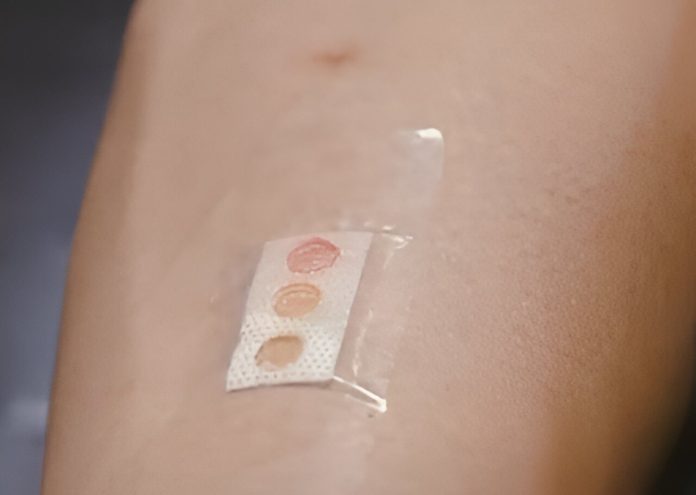
Scientists at Nanyang Technological University, Singapore (NTU Singapore), have developed an innovative bandage that measures health indicators through sweat.
This breakthrough offers a new, non-invasive way for patients to monitor their health.
Sweat contains biomarkers such as glucose, lactate, and urea, which can indicate various health conditions.
Unlike traditional methods, collecting sweat is painless and ideal for daily health monitoring.
The NTU researchers from the School of Electrical and Electronic Engineering (EEE) highlighted the advantages of using sweat for health checks.
Currently, diabetic patients typically use finger prick tests to monitor blood glucose levels. This involves pricking their fingers to collect a small blood sample, which is then analyzed with a portable glucose meter.
Some use sensor-based monitoring devices, but these are often expensive, rigid, and need to be worn for long periods.
The NTU team, led by Nanyang Assistant Professor Chen Yu-Cheng, created a flexible, light-based sensing device that looks like a plaster. This device uses a microlaser encapsulated in liquid crystal droplets, embedded within a soft hydrogel film.
The result is a small, flexible bandage that can provide accurate biomarker readings within minutes.
“Our innovation represents a non-invasive, quick, and effective way for diabetic patients to monitor their health,” said Professor Chen. “By combining a microlaser with a soft hydrogel film, we have shown that a wearable laser can offer a more pleasant health monitoring experience.”
This new technology is particularly timely, as diabetes is becoming more common worldwide. In Singapore alone, over 400,000 people live with the disease, a number expected to rise to over one million by 2050. The NTU team’s work supports health care in Singapore and globally, aligning with the NTU 2025 strategic plan to leverage research for societal benefits.
The bandage works by embedding microlasers in liquid crystal droplets, each customized to detect specific biomarkers like glucose, lactate, and urea. Different colored dots on the plaster represent each biomarker. When sweat interacts with the bandage, the microlasers emit light that varies based on the concentration of biomarkers. Users can read these levels by shining a light on the bandage and analyzing the emitted light with a mobile app.
In experiments, the bandage detected tiny fluctuations in biomarker levels, down to 0.001 millimeters. This sensitivity is 100 times better than current technologies. The device can measure both high and low levels of biomarkers, providing a comprehensive health picture. This feature is especially beneficial for diabetic patients, as it can detect low glucose levels that may indicate other health issues.
Dr. Lin Chun-Hsien from National Taiwan University Hospital praised the device, stating, “I am hopeful that this laser-based, non-invasive wearable device can provide a more convenient and effective way to monitor blood glucose. Its ability to measure other biomarkers is also an added bonus.”
Next, the NTU team plans to fine-tune the sensors to detect a wider range of substances, including drugs and other chemicals in sweat.
This innovation promises to revolutionize health monitoring, making it easier and more comfortable for patients worldwide.
If you care about diabetes, please read studies that pomace olive oil could help lower blood cholesterol, and honey could help control blood sugar.
For more information about diabetes, please see recent studies about Vitamin D that may reduce dangerous complications in diabetes and results showing plant-based protein foods may help reverse type 2 diabetes.



